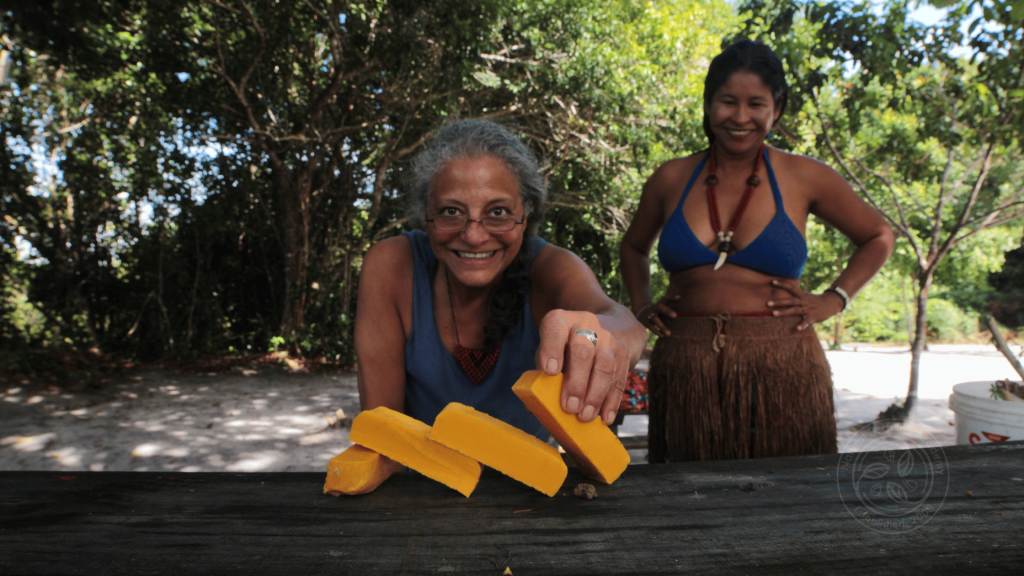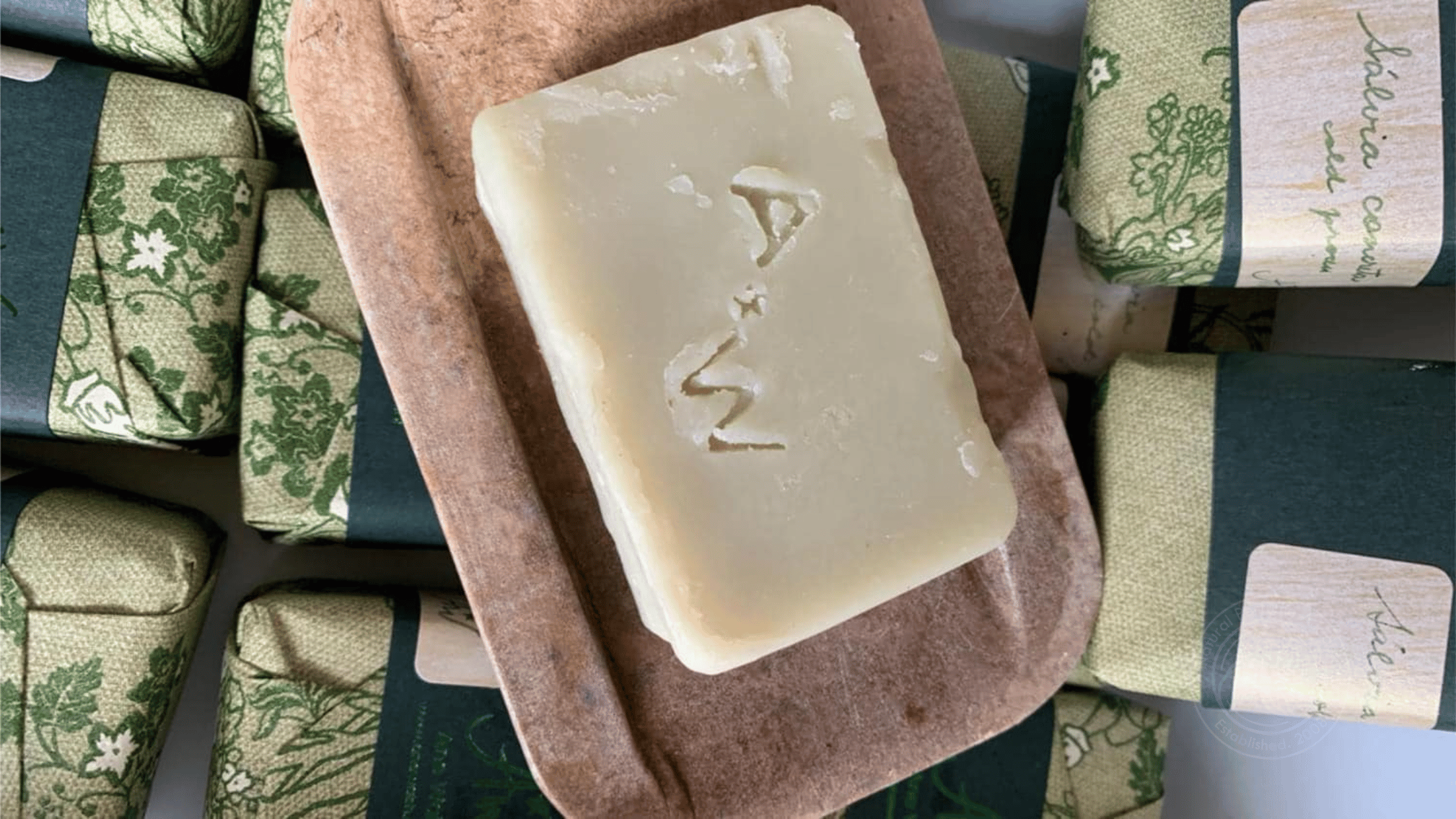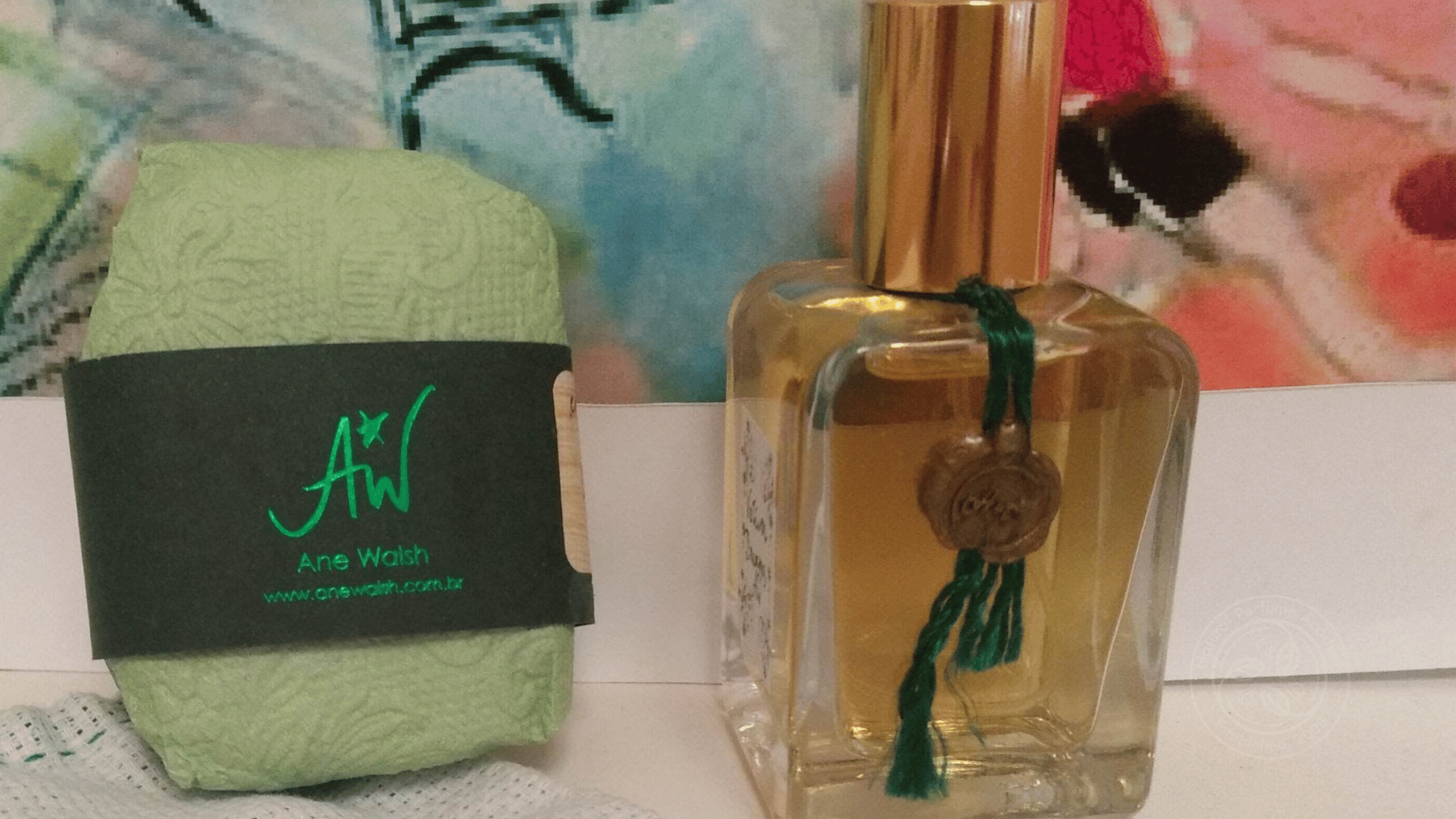
Reviving the Ancient Art of Soap Making: Ane Walsh’s Ash Soap Journey
Introduction: Crafting Tradition with Care
Natural soap-making is more than just a skill; it’s an art form rooted in history and culture. Ane Walsh, a natural perfumer and NPA Teacher, Translator and NPA ambassador to Brazil, has taken this art to heart, creating ash soap inspired by traditional Brazilian methods. Her journey is not just about creating a product but preserving a legacy—one that intertwines sustainability, history, and personal care.
In this blog, we explore the rich history of soap-making and Ane’s unique approach, showcasing her dedication to reviving ancient techniques while adapting them for modern use.

The Historical Roots of Soap Making
Soap-making is as ancient as civilisation itself, with origins traced back to 2800 BCE in Babylon. Early recipes combined animal fat and ash, resulting in a paste used not for cleaning but as a hair treatment. The Egyptians expanded the practice around 1500 BCE, blending animal fats with alkaline salts to create pastes for medicinal baths and skin treatments.
The Romans, meticulous in their hygiene, advanced soap’s development. As recorded by Pliny the Elder, they refined methods using mutton tallow and wood ash, eventually producing solid soaps for domestic use. However, the art of soap-making suffered during the Middle Ages, where bathing was wrongly considered harmful to health.
Soap’s story evolved again in the Middle East and Europe during the 7th to 17th centuries, with places like Aleppo, Castile, and Marseille becoming famous for their olive oil-based soaps. The discovery of glycerin and modern saponification processes in the 19th century industrialised soap, yet artisans like Ane Walsh continue to honour the roots of this craft.

Ane Walsh: Keeping Tradition Alive
Ane Walsh’s ash soap is deeply connected to Brazilian traditions. She explains how indigenous Brazilians bathed multiple times daily, considering clean water for washing the body as essential as air. This contrasts sharply with European settlers, who found these habits “strange.” Over time, African slaves introduced ash soap formulas, which became staples in Brazilian households.
Today, Ane reimagines these practices using sustainable ingredients. Her ash soap, a “care for skin and hair,” combines ucuúba butter, cupuaçu butter, beeswax, and clays to create a hard, luxurious bar. Unlike its industrial predecessors, her soap is infused with natural scents and crafted with care, preserving the integrity of traditional methods while ensuring sustainability.

The Accidental Discovery of Soap
Legend has it that soap’s discovery may have been an accident. Ancient cooks roasting meat over open flames likely observed how fat dripped onto ashes and, when mixed with rainwater, created a soapy residue. This accidental alchemy would later transform into deliberate recipes, laying the groundwork for soap-making as we know it.
In Ane’s case, her process is anything but accidental. It begins with meticulous preparation: boiling vegetable oils and butters with ash water, stirring until the perfect consistency forms. The mixture is poured into moulds and left to cure for months, creating bars rich in tradition and functionality.

A Visual Journey: Ane Walsh at Work
Alongside this blog, we’re thrilled to share exclusive footage of Ane Walsh’s soap-making process. In this video, Ane demonstrates how she combines centuries-old techniques with her personal flair, resulting in bars that are not only beautiful but sustainable.
The Sustainability Factor
Ane’s work aligns with growing movements toward sustainable living. By using local butters and oils—like ucuúba and cupuaçu—and avoiding synthetic additives, Ane’s soap respects the environment. The glycerin, a natural byproduct of saponification, remains in the bars, hydrating the skin and reducing waste.
As Ane points out, “If you can’t eat it, don’t put it on your skin.” This ethos resonates deeply, especially in a world increasingly aware of the environmental and personal impact of chemicals in everyday products.
Ane’s Soap and the New Year’s Tradition
In Brazil, ash soap holds cultural significance. People use it for their first bath of the New Year, a ritual symbolising renewal and good fortune. Ane’s soaps, infused with her unique blends of butters, waxes, and clays, offer a modern take on this tradition. By scenting her bars with natural fragrances, she brings an added layer of luxury to a time-honoured practice. Buy Ane Walsh’s soap and natural perfumes.

Bringing History and Modernity Together
Ane’s work exemplifies the power of tradition in modern times. Her ash soap is not just a product; it’s a story. It tells of indigenous bathing rituals, the resilience of African slaves, and the innovation of artisans like Ane, who adapt these legacies for today’s world.
By honoring the past and embracing sustainability, Ane inspires us to reconnect with the earth—and with ourselves. Her soap-making journey reminds us that even the simplest acts, like washing our hands, can carry profound meaning.
Join the Conversation
Have you tried making soap or experienced traditional ash soap before? We’d love to hear your stories. Leave a comment below or join our Natural Perfumers Club to explore more about Ane Walsh’s journey and the fascinating world of natural soap-making.